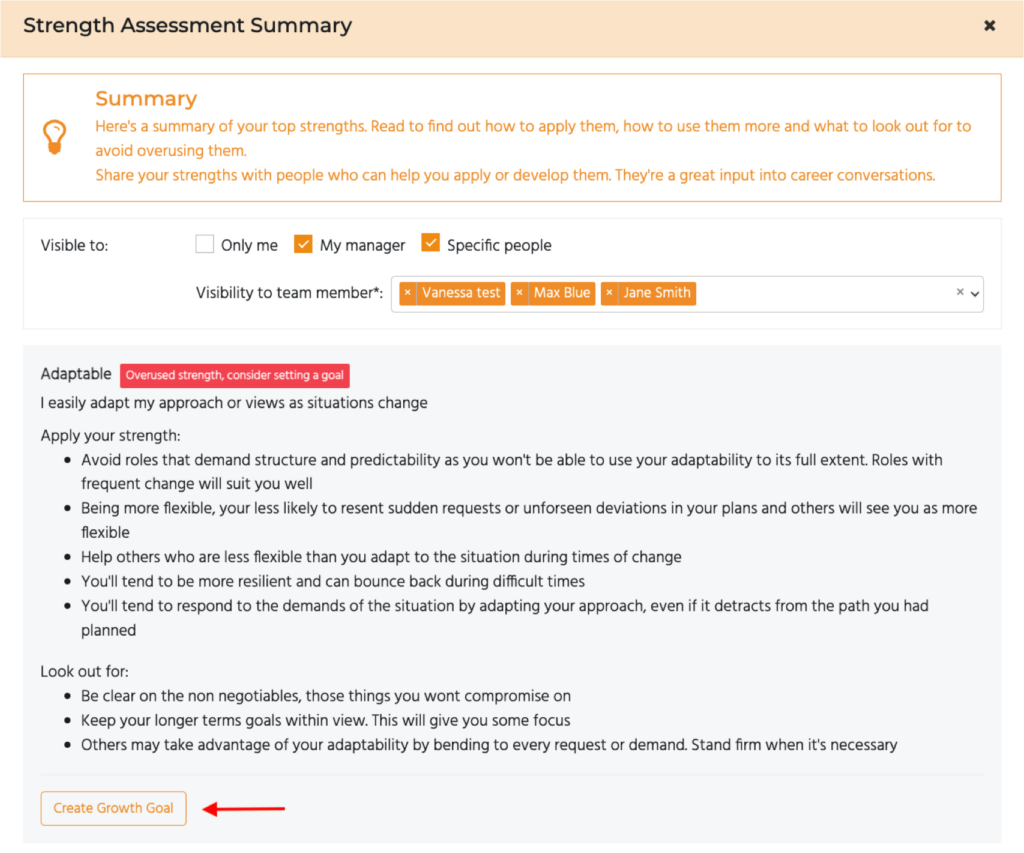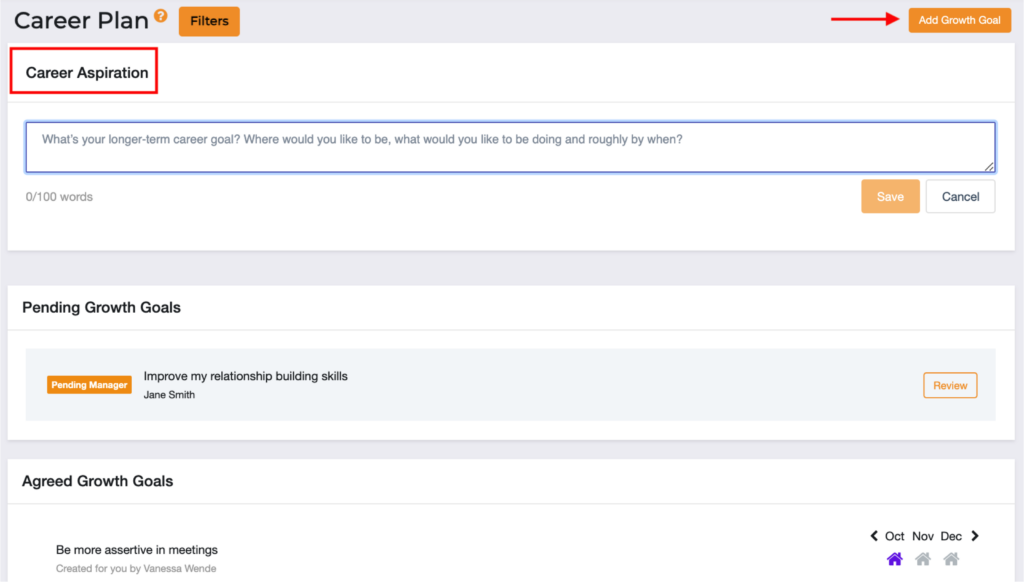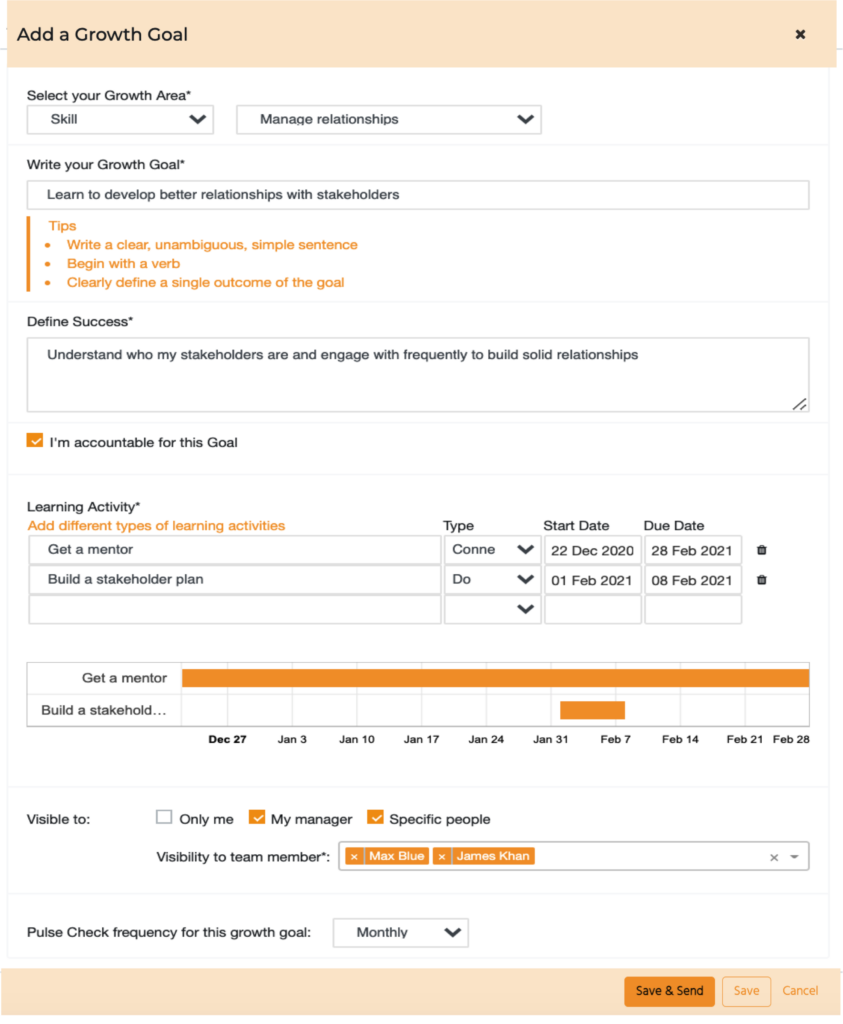Your Roadmap for Development
Know where you want to grow
- A habit of continuous learning and self directed growth is essential to success in your current role and your future career
- Be proactive in seeking out opportunities to grow every day. It shows you’re eager to progress
- Your Growth Goals are a roadmap for your development. They help you focus on where and how to grow, and provides a great way to measure and track your progress
- Get clear on your current skills and the skills you need for the future through:
- Your Talent Profile activities
- Feedback
- Your performance on your Objectives
- Then create actionable goals linked to the skills you want to build
- All your growth goals and progress are in one place in your Career Plan in Talent
The Key Principles of Growth
- Set short term growth goals – identify smaller, short term goals that will move you towards your longer term aspiration. Think, what can I realistically achieve in the next quarter?
- Set a small number of goals – too many goals spreads you too thin and reduces the focus and likelihood of achieving your goals. Rule of thumb: no more than three at a time.
- Share your growth goals – enlist the support of others, your manager, a coach, your peers – to provide feedback and keep you accountable. You’re more likely to achieve your goals.
- Measure your progress – review your progress regularly. This maintains your focus on your growth goals and increases the likelihood you’ll achieve them.
Create Growth Goals
- Create Growth Goals from any of the sections of your Talent Profile. They’ll appear on your Career Plan
- Or go straight to your Career Plan to set a goal

Build your Career Plan
- In your Career Plan, define your Career Aspiration – its your long term direction and career goal – Where you’d like to be, what you’d like to be doing and by when

Define your Goal
- Add a Growth Goal and select the growth area – whether it’s related to a skill, motivator, personal purpose, strength or technical skill.
- Write your growth goal then describe what success will look like when you’ve achieved your goal. What will be different once you’ve acquired the skill?
- You’re accountable for this goal, unless you’re a manager who can assign the goal to a direct report
- Add a mix of Do, Connect or Learn activities to achieve your growth goal:
- Do – 70% of your learning occurs on the job
- Connect – 20% of learning through coaching and mentoring,
- Learn – 10% of learning through formal learning

- Set the visibility of your goal so you can get the support of others in your learning journey. They’ll get an email and be able to provide comments or feedback.
- How frequently will you pulse check this goal? (monthly, quarterly, ½ yearly, when learning activities are due)
- Get agreement on your growth goals for your current role with your manager so they can support you in your development. They may have some further suggestions on how to build your skills.
Growth goal status
- All your growth goals will sit on your Career Plan under one of the following sections;
- Draft – Growth goals you have started to create but have not yet finalised or sent for agreement
- Private – Growth goals that you have created but marked as private. These are not visible to anyone, including your manager
- Pending – Growth goals created by you and awaiting your manager’s agreement or growth goals created by your manager and awaiting your agreement
- Agreed – Growth goals agreed with your manager
- Completed – Growth goals you have achieved and marked as ‘completed’
Filter your growth goals
- Growth Goals can be filtered in numerous ways to get a quick view of how you’re progressing and where to focus. Filter your goals goals by:
- Live – See which goals are currently in progress
- Not updated – Shows goals with no update since a particular date selected
- Pulse – See goals by pulse score within a time frame (current, last 3 months, full year)
- Name – Type in a goal name to search
- Due by – Search by goals that are due by a particular date
- Activity Type – Search goals containing Do, Learn or Connect activities
- Growth Area – Search by goals set for Skills, Strengths, Motivators or your Personal Purpose
- Use multiple filters at once to narrow your search

Build your goals and track progress
- Integrate learning moments into your job and reflect regularly to apply your learning. Your achievements become evidence of your learning.
- Setting growth goals helps you stay on track and get to where you want sooner. So think about what you’d like to develop and how you’d like to grow.
- Leaders – Have ongoing conversations with your people, give feedback and get active in their development. Great leaders are always across the growth aspirations of their people.
- Update the progress of your growth goals regularly. Mark your goals and activities as complete when you achieve the criteria for success.
- Complete pulse checks to assess your progress and get feedback
